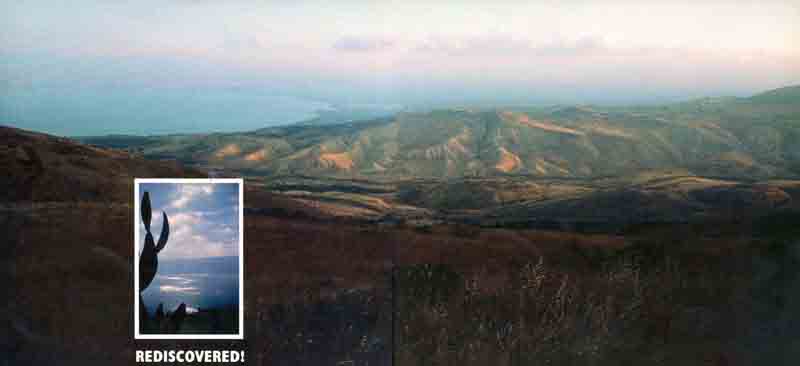Image Details

Ira Spar
Sitting on a volcano, or more accurately, on a volcanic plateau, the rugged landscape of the land of Geshur rises 1,500 feet above the eastern shore of the Sea of Galilee. In the inset, Geshur appears through the mist across the Sea of Galilee viewed from above the sea’s western shore. Today the area is known as the southern Golan. It was in Geshur that King David’s son Absalom sought sanctuary after having arranged the murder of his half-brother Amnon in revenge for Amnon’s rape of Tamar, Absalom’s sister. Absalom chose his refuge well: not only was his mother Maacah a Geshurite princess but Geshur had never been captured by the Israelites. Absalom thus knew that he would be beyond the reach of Amnon’s avenging kinsmen.
Modern archaeological research in the Golan began only after the 1967 Six-Day War and systematic excavation of the area’s Biblical-period remains—the Bronze and Iron Ages (3200–586 B.C.E.)—did not begin until 1987. The Land of Geshur Archaeological Project has concentrated on five key sites, leading to our first glimpses of Biblical Geshur.
